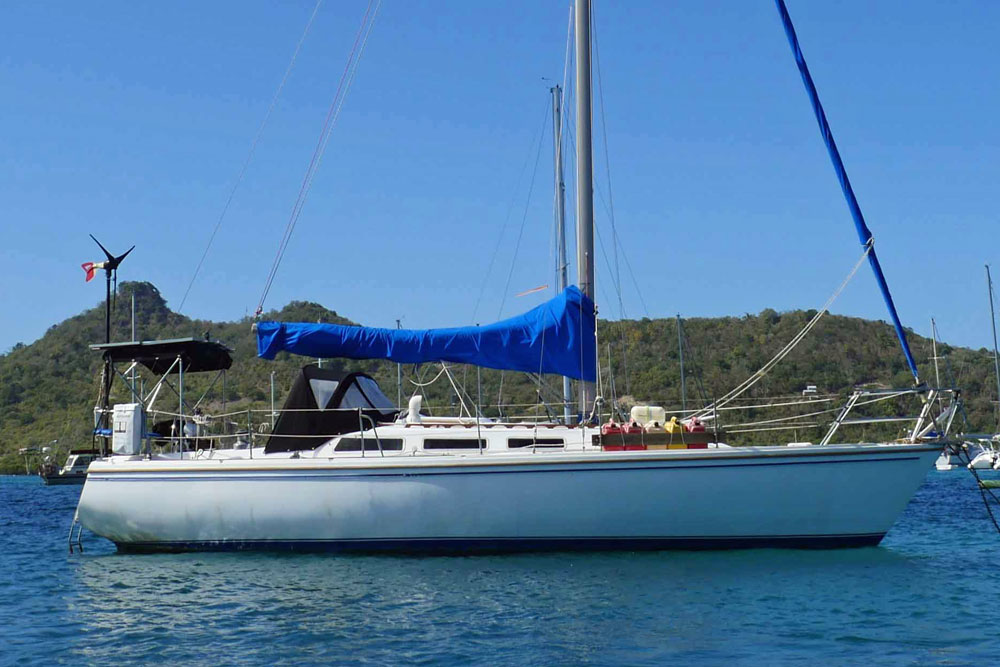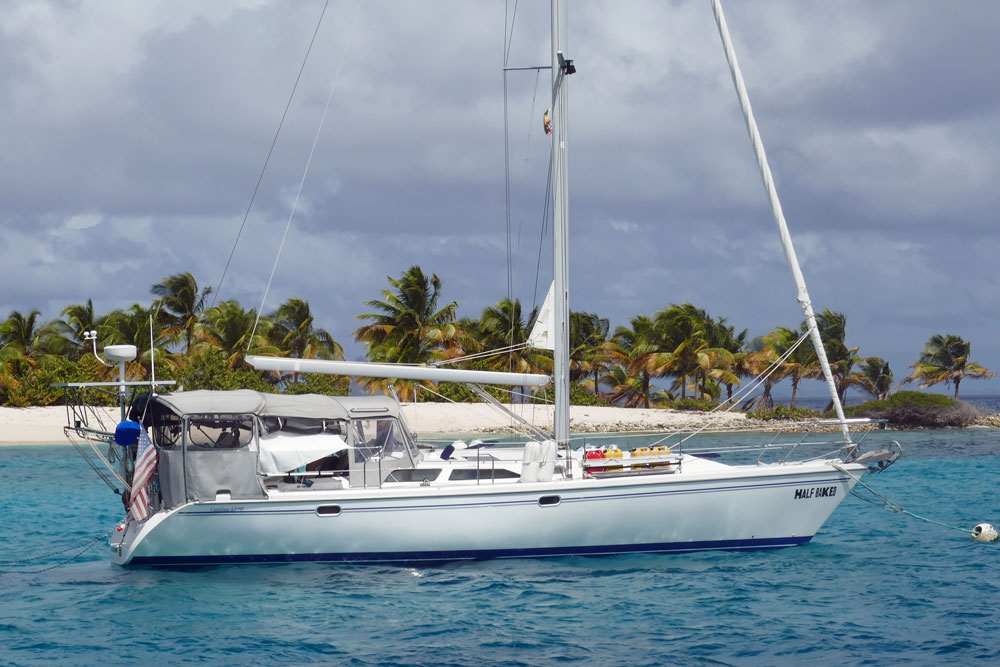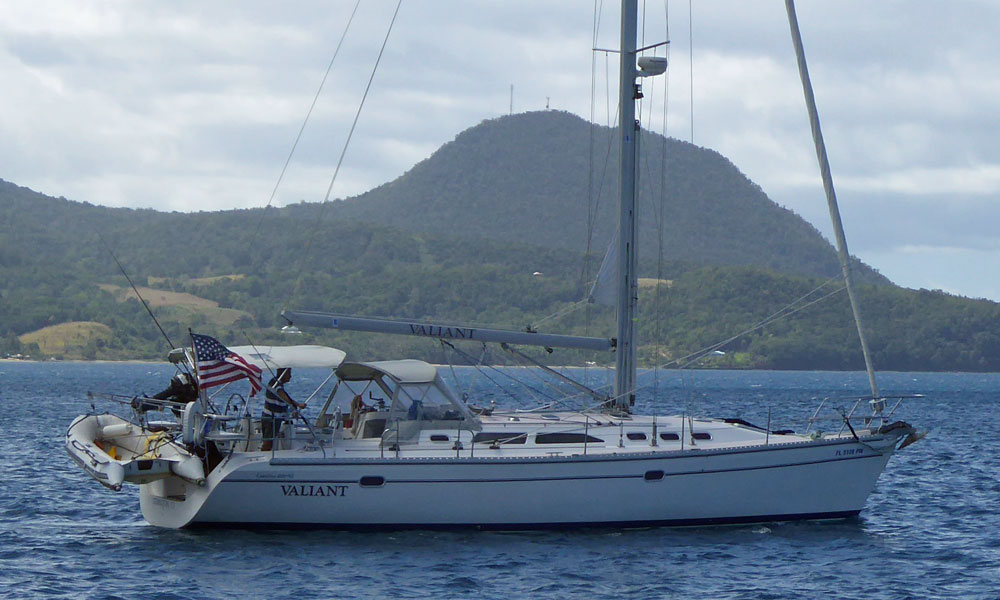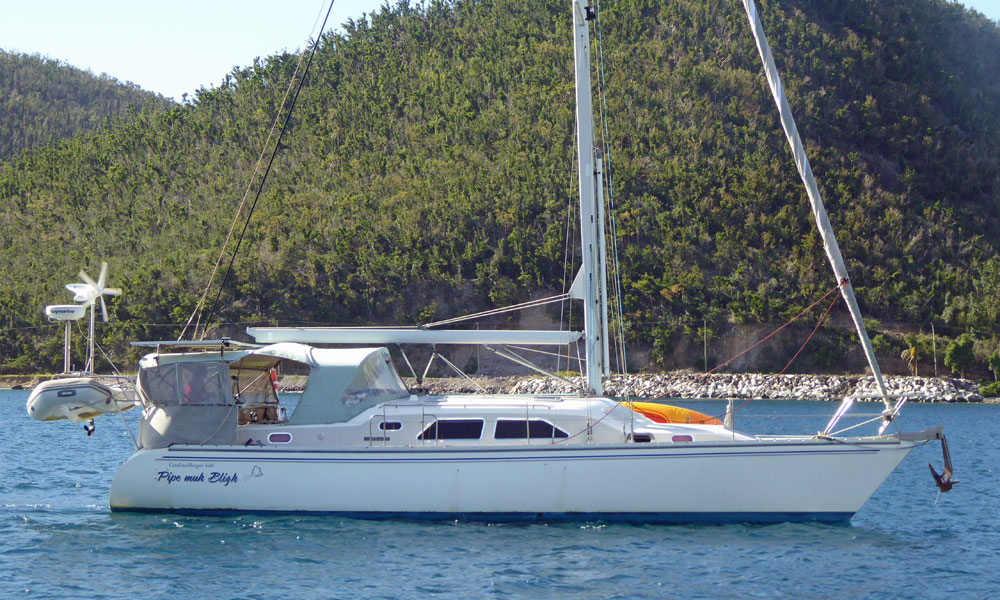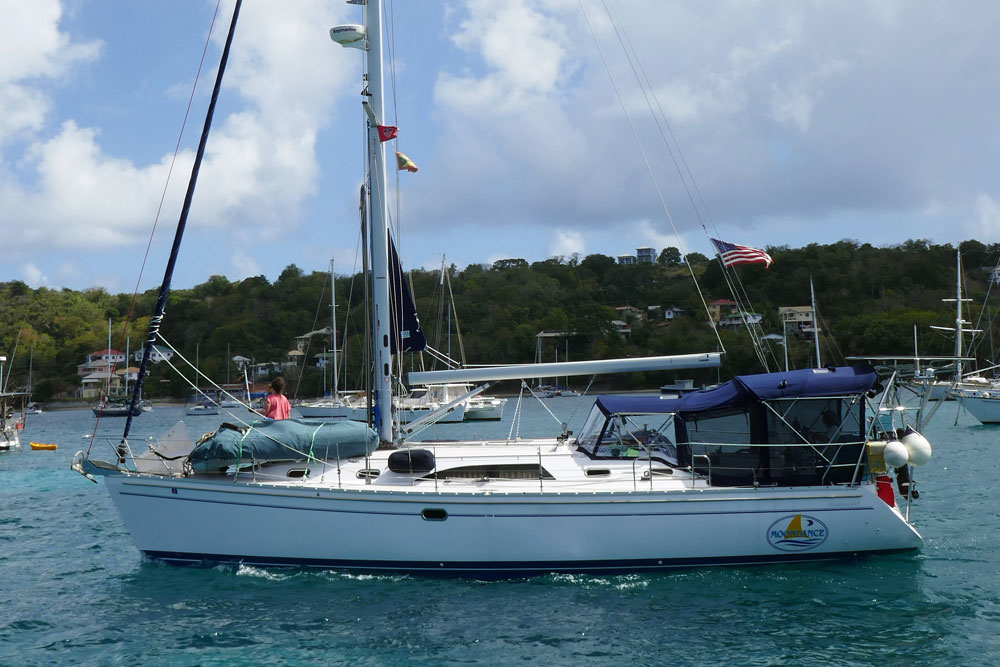- Home
- Cruising Yachts 30' to 35'
- Catalina 34 Sailboat Specs
The Catalina 34
Specs & Key Performance Indicators
The Catalina 34 sailboat was designed by American naval architect Frank V. Butler and built by Catalina Yachts, based in California USA.
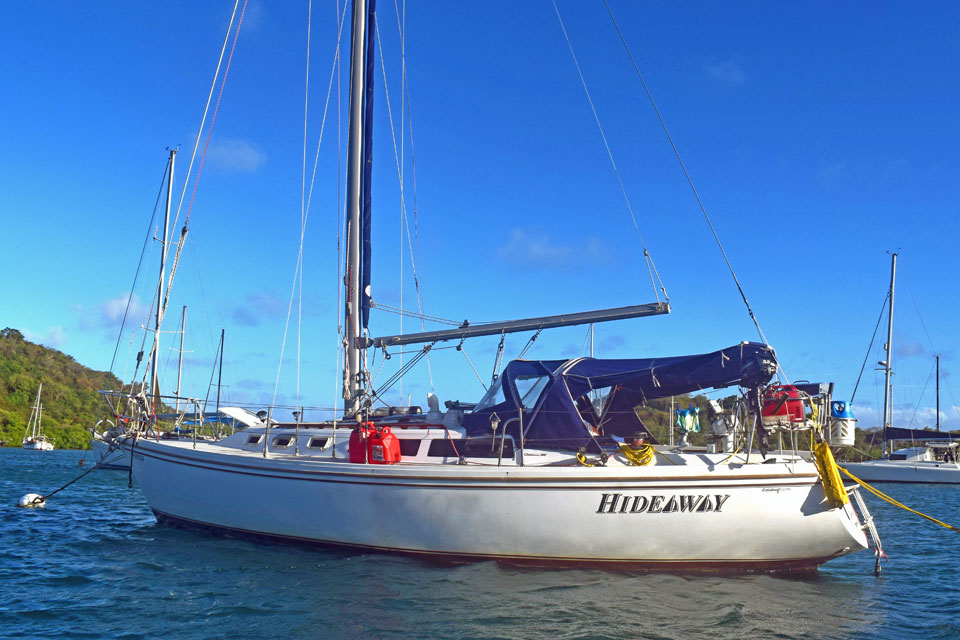 The Catalina 34
The Catalina 34Published Specification for the Catalina 34
Keel & Rudder Configuration: Fin keel with spade rudder
Hull Material: Fiberglass
Length Overall: 34'6" (10.52m)
Waterline Length: 29'10" (9.09m)
Beam: 11'9" (3.58m)
Draft: 5'7" (1.70m) (standard fin keel), 3'10" (1.17m) (wing keel)
Rig Type: Masthead sloop
Displacement: 11,950 lb (5,420 kg)
Ballast: 5,000 lb (2,268 kg)
Water Tank Capacity: 70 US gallons (265 liters)
Fuel Tank Capacity: 23 US gallons (87 liters)
Hull Speed: 7.32 knots (13.56 km/h)
Designer: Frank V. Butler
Builder: Catalina Yachts
Year First Built: 1985
Year Last Built: 1999
Number Built: 1,438
Options, Alternatives & Variations
The Catalina 34 MkII version was introduced in the mid-1990s, and featured several updates and improvements over the original model, including:
- Deck Layout: The MkII featured a redesigned deck layout with improved ergonomics, better placement of deck hardware, and a more modern appearance.
- Interior Layout: The interior of the MkII was updated with more efficient use of space, modern finishes, and improved stowage solutions. The layout was designed to be more comfortable and functional for extended cruising.
- Rigging & Sail Handling: The MkII had enhanced rigging and sail handling systems, making it easier to manage and improving overall sailing performance.
- Aesthetic Updates: The MkII included aesthetic updates both inside and out, giving the boat a more contemporary look compared to the original model.
Sail Areas & Rig Dimensions
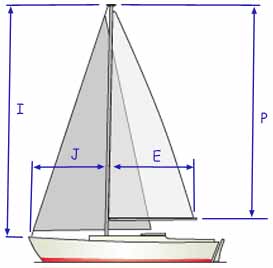
I (foretriangle height): 44.00 ft (13.41m)
J (foretriangle base): 13.50 ft (4.11m)
P (mainsail luff): 38.50 ft (11.73m)
E (mainsail foot): 11.75 ft (3.58m)
Mainsail Area: 226 ft2 (21.014 m²)
Jib/Genoa Area: 297ft2 (27.592 m²)
Total Sail Area: 523ft2 (48.606 m²)
Published Design Ratios
The Key Performance Indicators (KPIs)
The following analysis of the design ratios gives an indication of the boat's likely sailing characteristics, but see the 'Notes of Caution' below:
Sail Area to Displacement Ratio (SA/D): 16.1
This ratio suggests that the Catalina 34 has reasonably good performance. It is on the lower end of the 16 to 20 range, indicating that it is adequently powered but not exceptionally so. This means the boat should perform reasonably well in a variety of wind conditions without being too demanding to handle.
Ballast to Displacement Ratio (B/D): 41.8%
With a B/D ratio above 40, the Catalina 34 is considered a stiff and powerful boat. This indicates good stability and an ability to stand up well to the wind, which should provide a comfortable and confident sailing experience, particularly in moderate to strong winds.
Displacement to Length Ratio (D/L): 201
Falling within the 200-275 range, the Catalina 34 is categorized as having a Moderate Displacement. This means it strikes a balance between being too heavy and too light, providing relatively good speed while maintaining a comfortable motion through the water. It will likely offer a solid all-around performance without being overly sluggish or too tender.
Comfort Ratio: 22.2
With a comfort ratio between 20 and 30, the Catalina 34 is anticipated to have a somewhat lively motion. This is typical of a coastal cruiser that has moderate stability. It should be comfortable enough for weekend and coastal cruising without the rough, jarring motions of a pure racing boat, though it may still exhibit some liveliness in choppy or rough conditions.
Capsize Screening Formula (CSF): 2.1
A CSF of 2.1 is just above the 2.0 threshold for ocean passage suitability. While it indicates that the Catalina 34 is more apt for coastal cruising rather than long ocean passages, it is relatively close to the threshold. Therefore, it may be capable of handling occasional blue water ventures, though probably not the best choice for frequent or serious offshore voyaging.
Overall Assessment:
The Catalina 34 is a well-rounded coastal cruiser with decent performance capabilities, good stability, and moderate comfort. Its design ratios suggest that it should be reliable and enjoyable for extended coastal cruising and occasional offshore trips, though more serious bluewater sailing might be outside its optimal use case. Its combination of power, stability, and moderate motion makes it a versatile and approachable boat for a broad range of sailing conditions.
Here's how to calculate the KPIs yourself - without having to wrestle with the mathematics...
Design Ratios: Notes of Caution...
- The Sail Area/Displacement Ratio (SA/D): This ratio provides an estimate of the sail power relative to the boat's weight, which can indicate potential speed in various wind conditions. But it doesn't account for the efficiency of the sail plan, the rigging, or the skill of the crew. Real-world performance can vary significantly based on these factors.
- The Ballast/Displacement Ratio (B/D): This ratio gives an idea of the boat's stability and stiffness, which is crucial for handling and safety. But it doesn't consider the distribution of the ballast or the hull shape, both of which can greatly affect stability. A high B/D ratio alone doesn't guarantee a stable boat if the ballast is poorly distributed.
- The Displacement/Length Ratio (D/L): This ratio helps predict the boat's speed potential and its behaviour in different sea conditions. But it doesn't account for the hull design or the boat's overall weight distribution. Two boats with the same D/L ratio can perform very differently if their hull shapes are different.
- The Comfort Ratio (CR): This ratio estimates the boat's motion comfort in a seaway, which is important for long passages. But it doesn't consider the boat's interior layout, which can also affect comfort. Additionally, personal tolerance to motion varies, so a boat that is comfortable for one person might not be for another.
- The Capsize Screening Formula (CSF): This formula assesses the likelihood of a boat capsizing in heavy seas, which is critical for offshore safety. But it doesn't take into account the boat's handling characteristics or the skill of the crew. A boat with a low CSF can still capsize if poorly handled in severe conditions.
General Limitations
- Static Nature: These ratios are static measurements and don't account for dynamic factors like wave action, wind gusts, or crew actions.
- Simplification: They simplify complex interactions into single numbers, which can be misleading. Real-world performance is influenced by a multitude of factors that these ratios can't fully capture.
- Context: The context in which the boat is used (e.g., coastal cruising vs. offshore racing) can greatly affect how these ratios should be interpreted.
In summary, while these ratios provide valuable insights into the theoretical performance characteristics of a sailboat, they should be used as part of a broader assessment that includes practical experience, sea trials, and expert advice.
Other sailboats in the Catalina range include:
This article was written with the assistance of Gemini, a large language model developed by Google. Gemini was used to gather information, summarize research findings, and provide suggestions for the content and structure of the article.
Recent Articles
-
42' Sparkman & Stephens ketch for Sale
Nov 13, 25 05:34 PM
'Cecily' a long-keeled, heavy displacement ketch is for sale in Grenada, West Indies -
'Silver Bullet', a Hike Metal 55 Sailboat for sale
Nov 12, 25 06:10 PM
The Hike Metal 55 is a custom-built 55-foot aluminum pilothouse sloop designed for serious offshore cruising -
The Catamaran vs Monohull Argument Rages On
Nov 12, 25 04:00 AM
Whilst the catamaran vs monohull argument will never be fully resolved - you're either a catamaran or a monohull man - here's the comparison of one against the other
